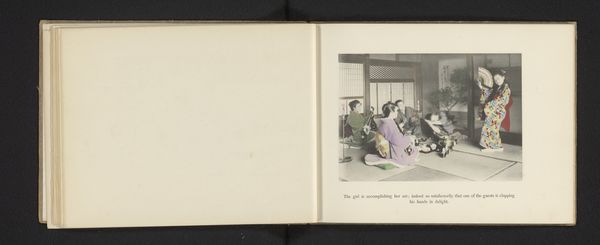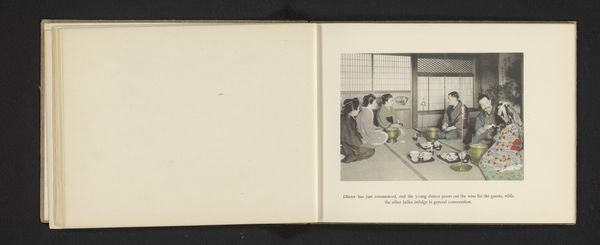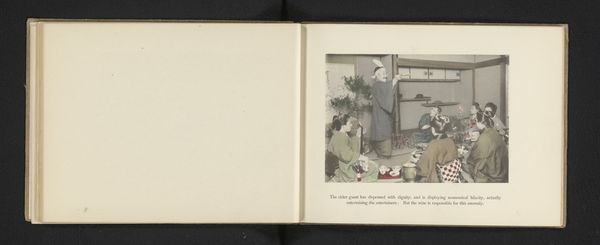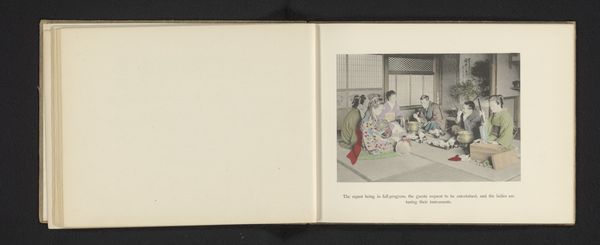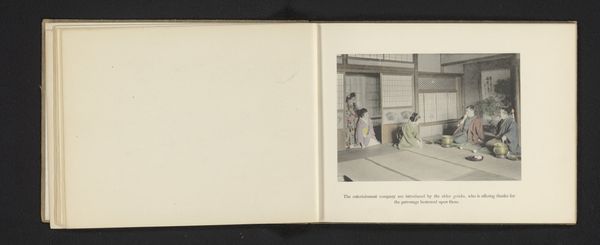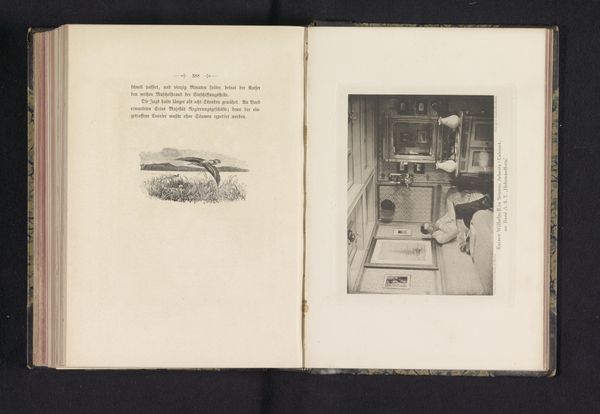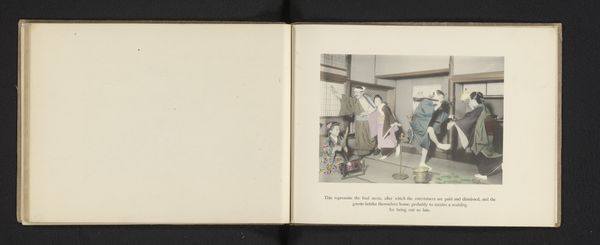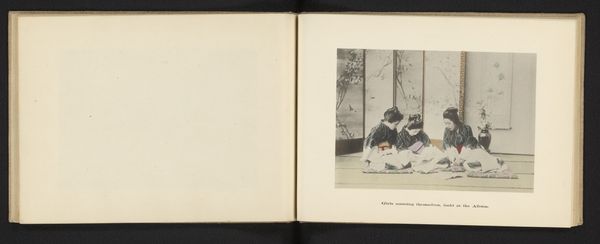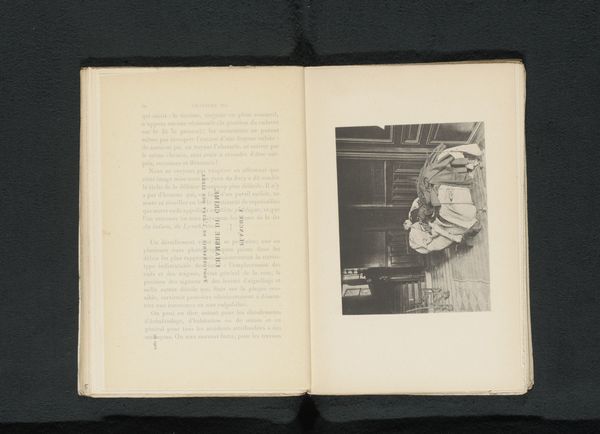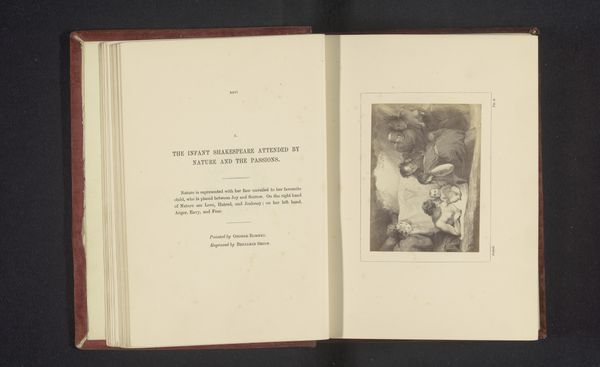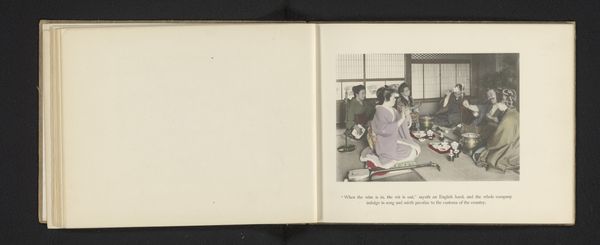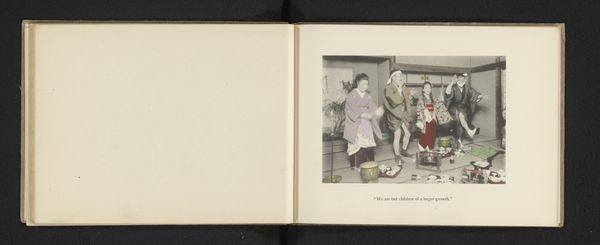
photography
#
photography
Dimensions: height 106 mm, width 151 mm
Copyright: Rijks Museum: Open Domain
Editor: Here we have "Two Men and a Waitress in a Teahouse in Japan," a photograph by Kōzaburō Tamamura, probably taken sometime between 1896 and 1906. It feels very staged and composed. What do you see in this piece? Curator: Immediately, I'm struck by how this photograph engages with Orientalism and Japonisme. It’s clearly catering to a Western audience fascinated by what they perceived as exotic Japanese customs. Editor: Japonisme? Is that like Western artists being inspired by Japanese art? Curator: Precisely. But it goes deeper. It's not just about aesthetic influence; it’s about the power dynamics at play. This image, with its carefully arranged figures and setting, is creating a narrative *for* Japanese culture, rather than *by* it. Who benefits from this representation? Editor: So, the photograph isn't necessarily about what's really happening, but about selling an idea of Japanese culture? Curator: Exactly. Consider the framing. Why these subjects? Why this activity? How does the photographer's gaze shape our understanding—or misunderstanding—of Japanese life at the time? Were these individuals paid actors presenting a crafted image of the ‘Orient’ for the western camera lens? Editor: That makes me think about the lack of agency given to the figures in the photograph. They're almost props in a scene created for Western consumption. Curator: And think about how that echoes contemporary debates about representation, cultural appropriation, and who gets to tell whose story. What does this image tell us about power, performance, and the global gaze at the turn of the century? Editor: I hadn’t thought about the photographer having such a deliberate agenda. Now I see the photo less as a neutral depiction, and more as a statement about cultural exchange – or perhaps, cultural exploitation. Curator: It shows us that what might seem like a simple genre painting photograph of daily life is actually a really rich, complex site of cultural and political meaning.
Comments
No comments
Be the first to comment and join the conversation on the ultimate creative platform.

